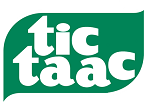Lightweight and easy-to-use Threat modeling solution following DevSecOps principles
"One day the customer asked to perform threat modeling for our product. Of course, we have heard about it a lot from different teams, I have even read several articles and looked through a book to get familiar with this process, but they were too abstract as for me and didn't give me a certainty at all. Then we have faced several enterprise - level products which theoretically would help us, but we didn't want to deploy the whole security program because of it, we just waned to get the threats list for our product. Nothing else"
Anonymous Developer
The idea behind this product is clear - I want to create something simple that would help to solve this difficult problem. Ideally, with one click or a command and with a possibility to integrate it into a pipeline if needed. Inspired by dependency-check architecture and simplicity plus taking in mind that developers just love mapping everything in code, I've created "TicTaaC", which means "Threat modeling-as-a-Code in a Tick"
All the tool is needed is a data flow code file described in the yml-like format specially designed for this.
The examples of these files with verbose comments describing every aspect may be found here.
More detailed instructions can be found on the
github wiki.
The latest CLI can be downloaded from github in the releases section.
On *nix
$ ./bin/tic-taac.sh -h
$ ./bin/tic-taac.sh --out . --threatModel [path to threat model file]
On Windows
> .\bin\tic-taac.bat -h
> .\bin\tic-taac.bat --out . --threatModel [path to threat model file]
See TicTaaC Docker Hub repository.
#!/bin/sh
TT_VERSION="latest"
THREAT_MODEL_DIR=$HOME/threat-model
# Make sure we are using the latest version
docker pull rusakovichma/tic-taac:$TT_VERSION
docker run --rm \
-e user=$USER \
-u $(id -u ${USER}):$(id -g ${USER}) \
--volume $THREAT_MODEL_DIR:/threat-model:z \
--volume $(pwd)/report:/report:z \
rusakovichma/tic-taac:$TT_VERSION \
--threatModel /threat-model/simpest-threat-model.yml \
--outFormat html \
--out /report
# Set mitigation strategy for the corresponding threats
# --mitigations /threat-model/mitigations.ymlFor TicTaaC usage at Jenkins pipeline, see Jenkinsfile example.
- No required additional dependencies
- Special lightweight and easy-to-understand format for data flows description
- Automatic Threats Attack Vector & Risk Score calculation based on the data flow context
- Ideal for Security Teams - it has flexible Threats Library logic customization in a separate file with special expression language support
